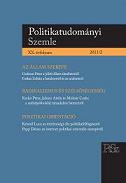Rivális elméletek a jóléti államról
Rival Theories of the Welfare State
Author(s): Péter GedeonSubject(s): Politics / Political Sciences
Published by: MTA Politikai Tudományi Intézete
Keywords: Welfare state regime; power resource thesis; social coalitions; labor market regime; electoral systems
Summary/Abstract: There are different welfare states in modern capitalism. Why is there a liberal welfare state in one country, a conservative one in another country and a social democratic one in a third country? Explanations are themselves different. I would like to identify both the common and confl icting points of the different explanations by reconstructing the arguments of different schools of thought. Do rival theories as analytical constructs explaining the emergence of welfare states exclude or presuppose each other? I look at four theories of political economy that are different but at the same time connected by the way how they presume a causal relationship between welfare state regimes and social coalitions. (1) The power resource thesis describes the full causal line in the following way: social coalitions → government partisanship → welfare state regime. (2) In the theory of cross-class coalitions government partisanship is not part of the causal chain and the category of social coalitions becomes a mediating variable that is analytically preceded by the concept of labor market regime. The explanatory scheme of this theory is the following: labor market regime → social coalitions → welfare state regime. (3) The Varieties of Capitalism school also thinks that the labor market regime determines the causal line but it does not disregard the effects of government partisanship. Its scheme is as follows: labor market regime → social coalitions, median voter → government partisanship → welfare state regime. (4) In the theory of political institutional effect the variable of social coalitions mediates between the categories of electoral regime and government partisanship. The complete explanation is the following: type of electoral system → social coalitions → government partisanship → welfare state regime.
Journal: Politikatudományi Szemle
- Issue Year: 2011
- Issue No: 2
- Page Range: 7-30
- Page Count: 26
- Language: Hungarian

